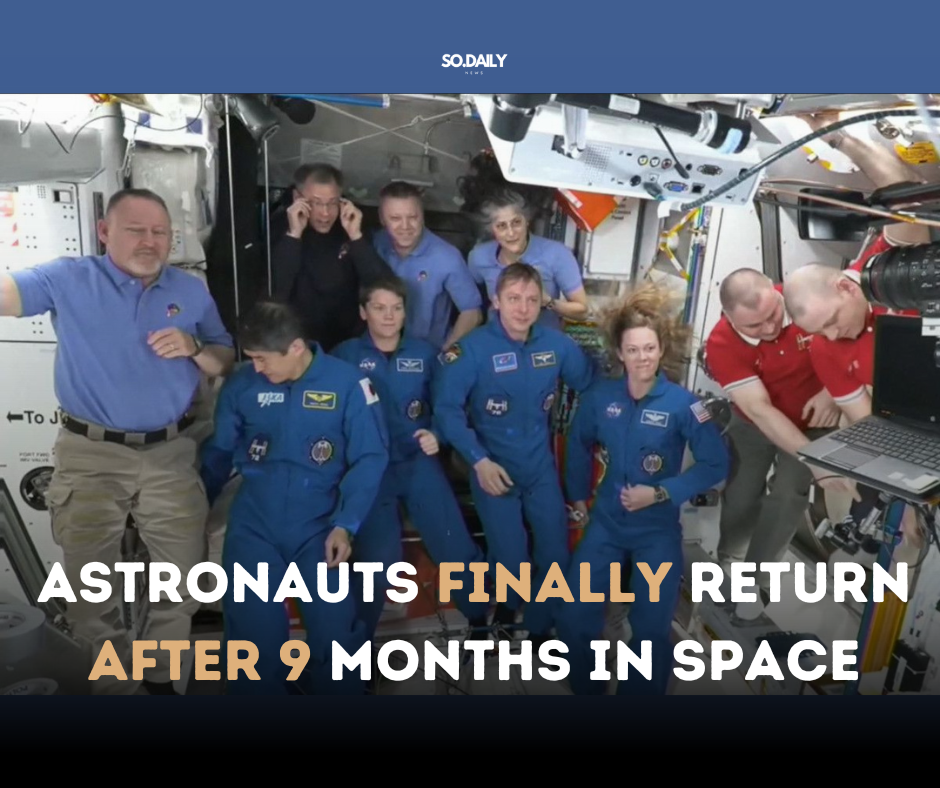March 18, 2025 – NASA astronauts Sunita “Suni” Williams and Barry “Butch” Wilmore have returned to Earth after an unexpected nine-month mission aboard the International Space Station (ISS). Their prolonged stay, initially planned for just over a week, was extended due to technical issues with Boeing’s Starliner spacecraft, underscoring the complexities and challenges inherent in human space exploration.
Mission Overview and Unexpected Extension
Williams and Wilmore launched to the ISS in June 2024 aboard Boeing’s Starliner, marking the spacecraft’s first crewed test flight. The mission was intended to last approximately eight days, during which the astronauts would validate the Starliner’s performance and conduct routine station maintenance. However, shortly after docking, anomalies were detected in the Starliner’s thruster system, prompting NASA and Boeing to delay its return to Earth for further assessments.
As engineers on the ground worked to diagnose and rectify the issues, Williams and Wilmore seamlessly integrated into the ISS crew, taking on a full workload of scientific experiments, maintenance tasks, and spacewalks. Over the course of their extended mission, they participated in nine spacewalks, contributing significantly to station upkeep and research initiatives.
Transition to SpaceX’s Crew Dragon for Return
Given the prolonged nature of their stay and the unresolved technical challenges with the Starliner, NASA made the strategic decision to bring the astronauts back aboard SpaceX’s Crew Dragon spacecraft. This decision highlighted the agency’s commitment to crew safety and the importance of having multiple transportation options for crewed missions.
On March 18, 2025, at 1:05 a.m. Eastern Time, Williams and Wilmore, along with NASA astronaut Nick Hague and Roscosmos cosmonaut Aleksandr Gorbunov—who had completed a standard six-month rotation—undocked from the ISS aboard the Crew Dragon capsule named “Freedom.” The spacecraft is scheduled to splash down off the coast of Florida at approximately 5:57 p.m. Eastern Time, concluding their extended mission.
Implications for NASA’s Commercial Crew Program
The challenges faced during this mission underscore the inherent risks and technical hurdles associated with human spaceflight. Boeing’s Starliner, part of NASA’s Commercial Crew Program alongside SpaceX’s Crew Dragon, aims to provide reliable and independent access to low Earth orbit. The issues encountered during this mission have prompted a thorough review and are expected to lead to design and process improvements, ensuring the safety and reliability of future flights.
Despite the delays and challenges, the astronauts maintained professionalism and adaptability, embodying the resilience required for long-duration space missions. Their experiences will provide valuable insights for NASA and its partners as they continue to refine spacecraft systems and operational protocols.
Looking Ahead
As NASA continues to collaborate with commercial partners to maintain and enhance access to the ISS, the experiences from this mission will inform future strategies and decisions. The agency remains committed to fostering a robust and competitive commercial space sector, ensuring that multiple providers can safely and efficiently transport astronauts to and from the ISS.
The safe return of Williams and Wilmore marks the end of a mission that, while longer than anticipated, has contributed significantly to our understanding of long-duration spaceflight and the operational challenges of maintaining a continuous human presence in space. Their journey exemplifies the spirit of exploration and the ongoing commitment to advancing human spaceflight capabilities.
Note: This article is based on current reports and developments as of March 18, 2025.
